Abstract
A brief historical analysis of the general concept of hallucination is presented and the suggestion is made that it emerged as the unwarranted generalisation of a perceptual model that was meant to apply only to vision and the "distance senses". Against this background the evolution of tactile hallucinations is considered and its interaction with 19th century psychological theory explored. It is concluded that tactile hallucinations are sui generis phenomena which do not fit the conventional model and whose clinical identification rests on criteria so far unclear. A brief review of their taxonomy and diagnostic usefulness is presented. Some wider implications are drawn which should be relevant to the general concept of hallucination.
Full text
PDF
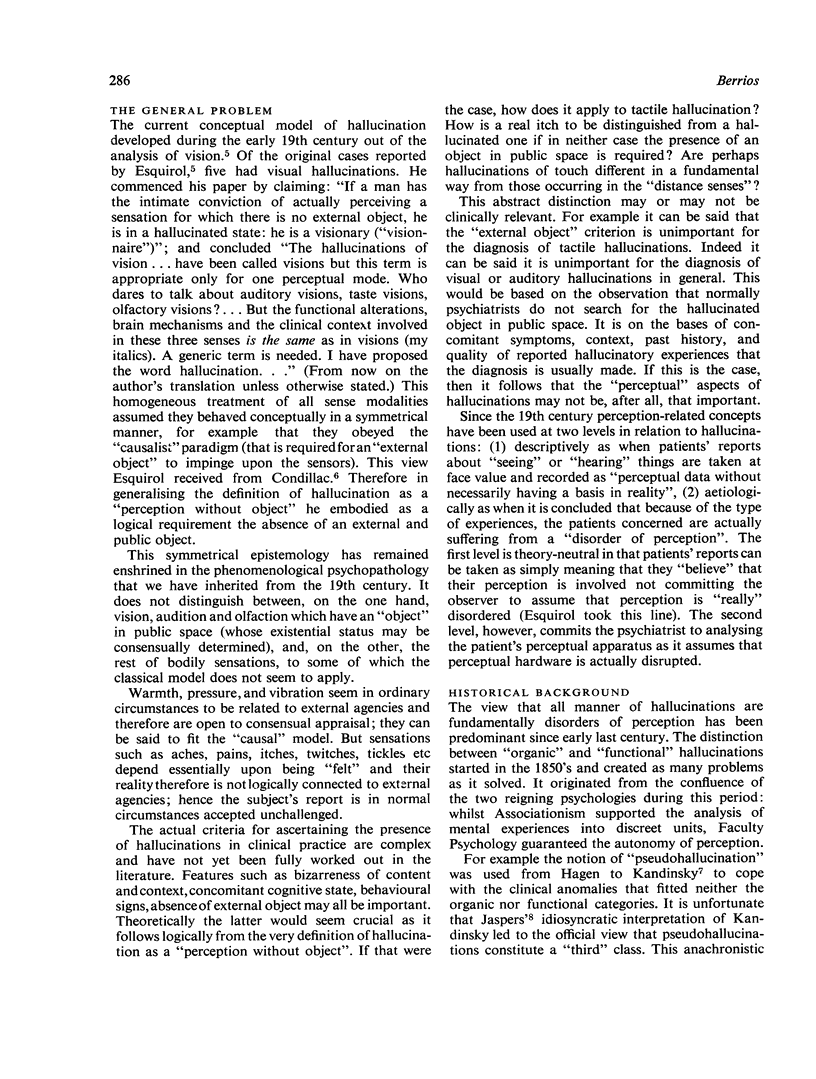
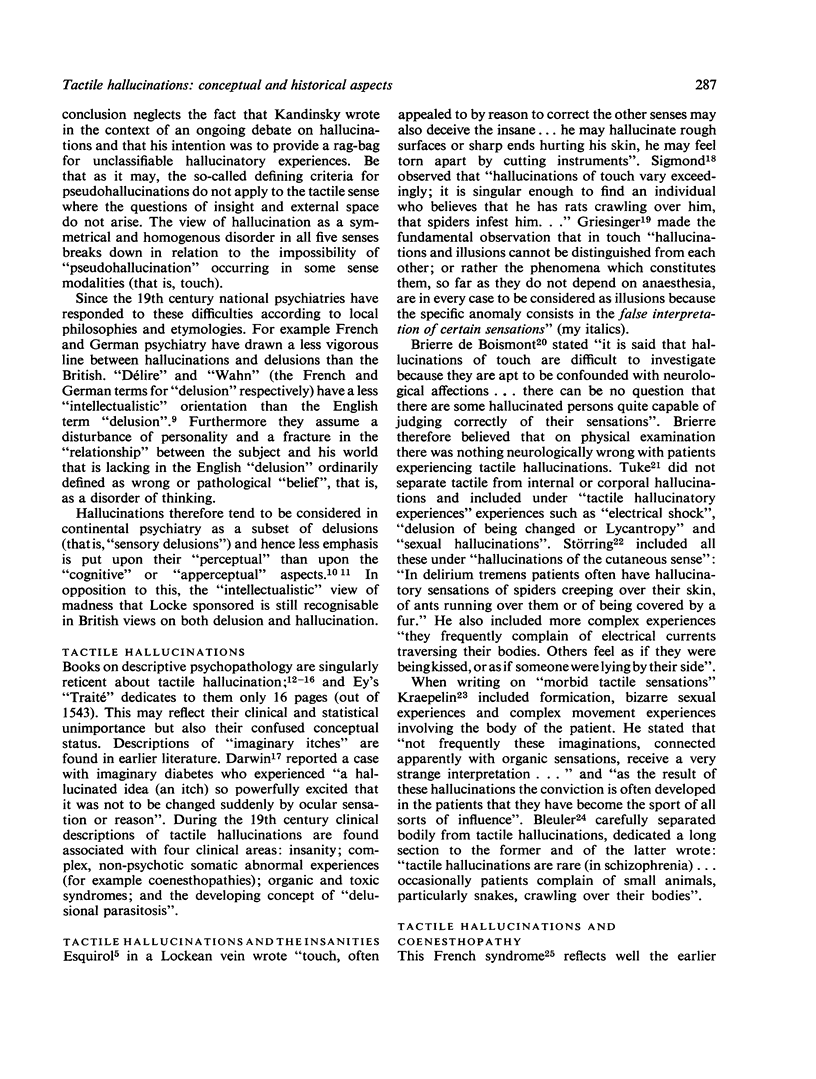
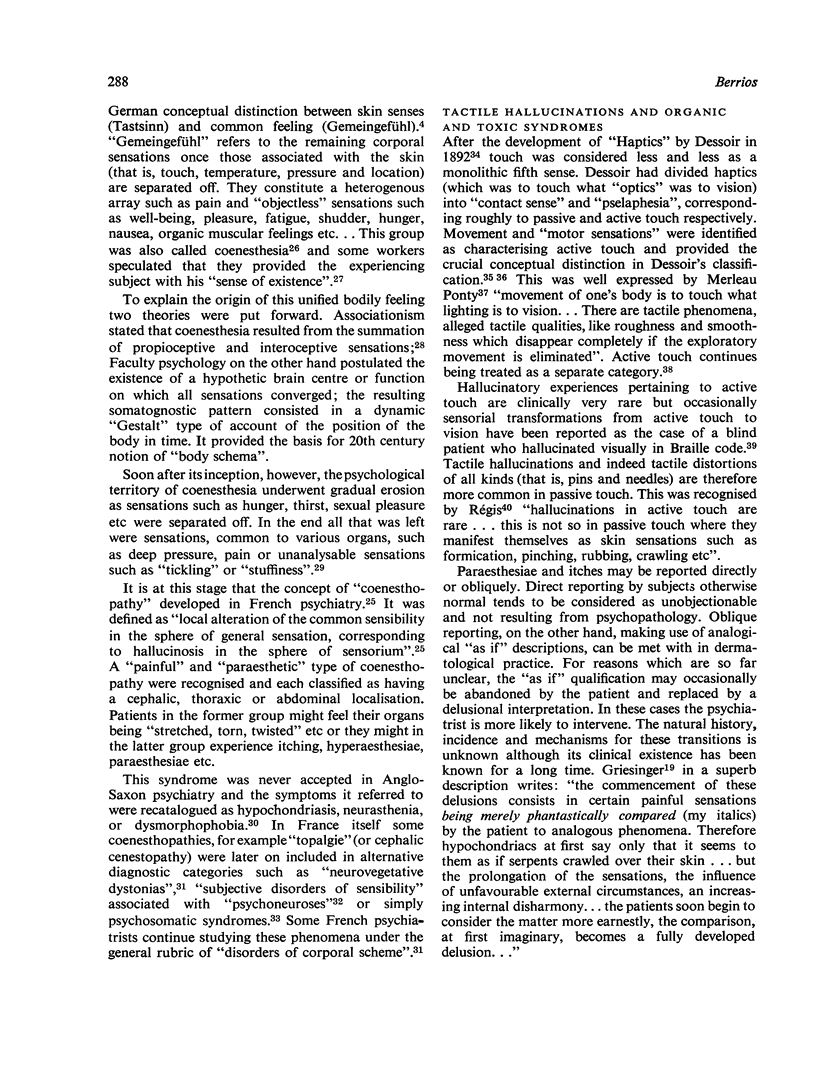
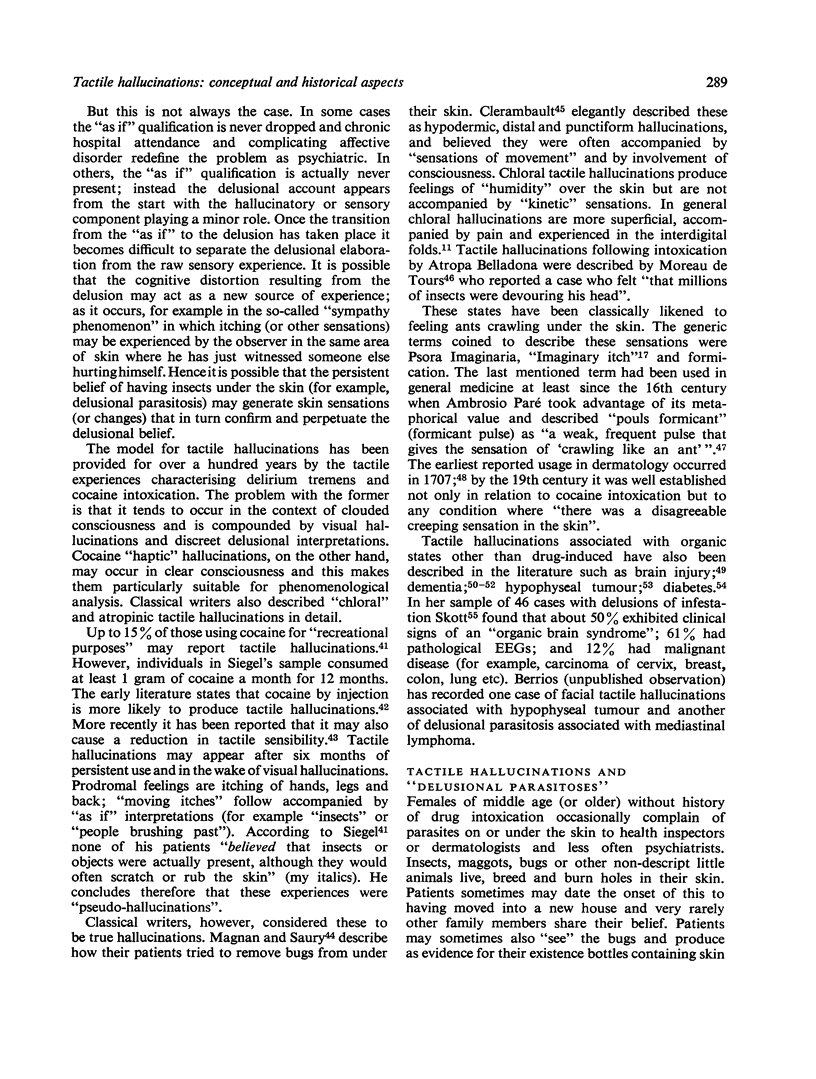
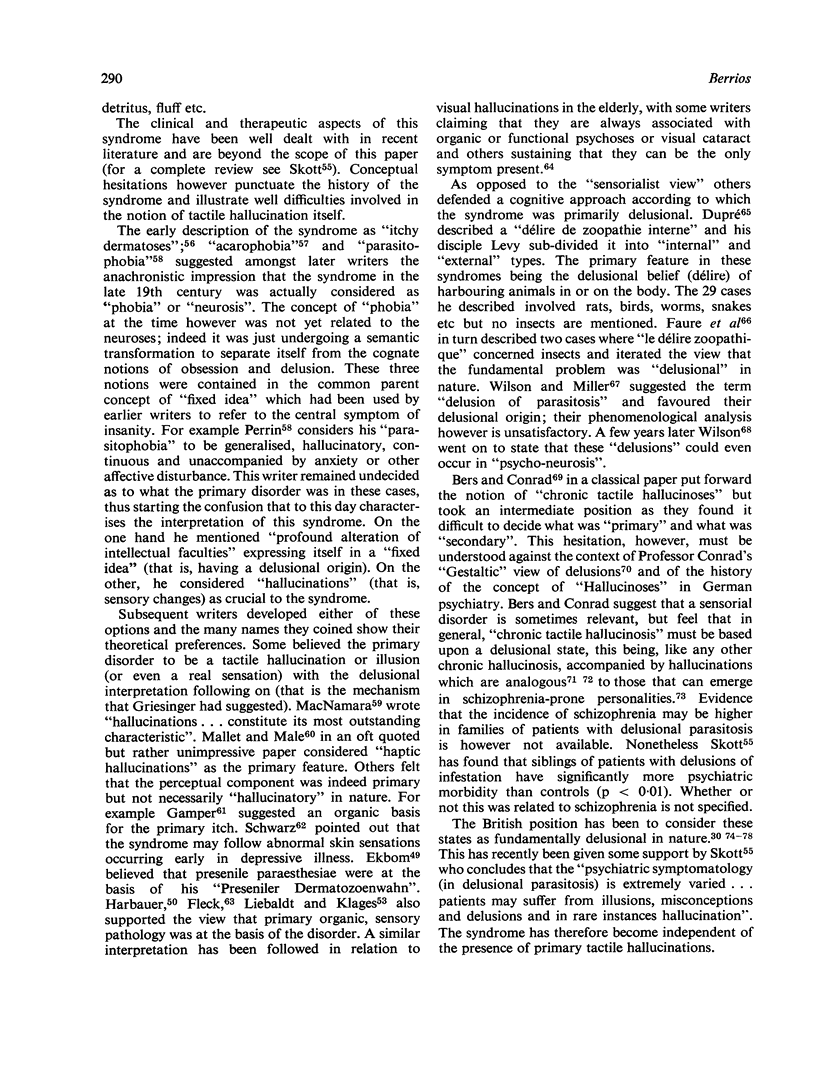
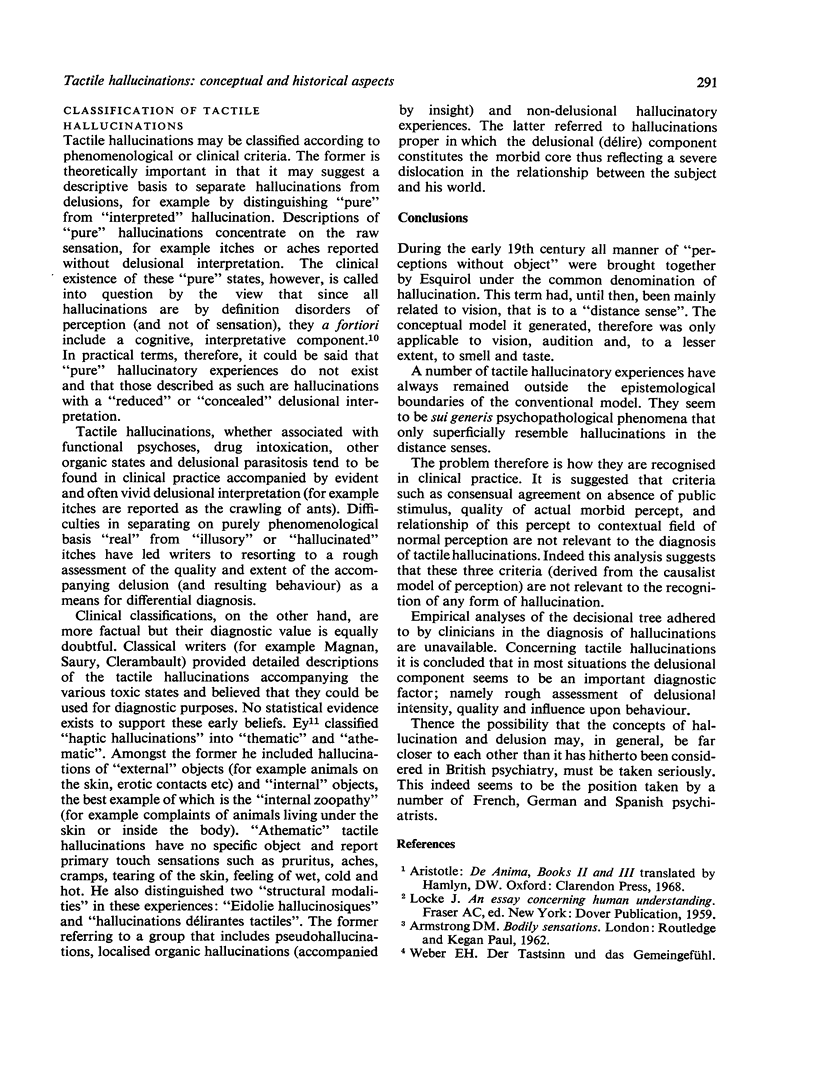
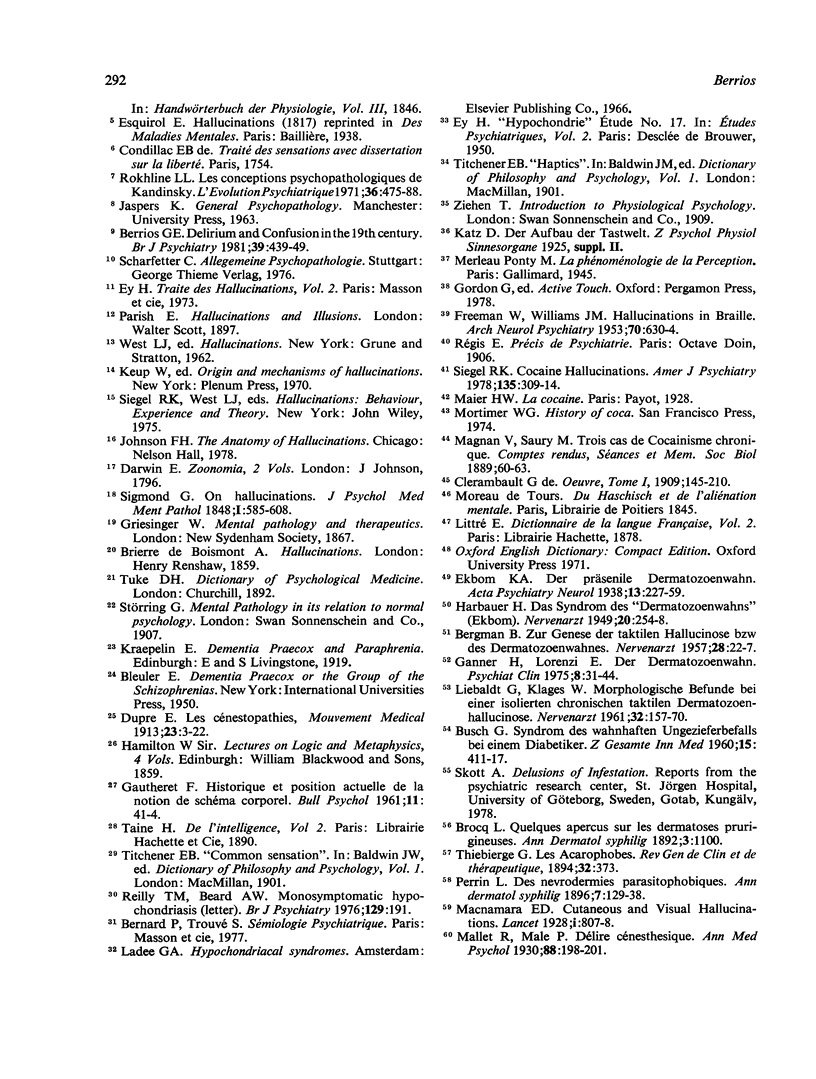
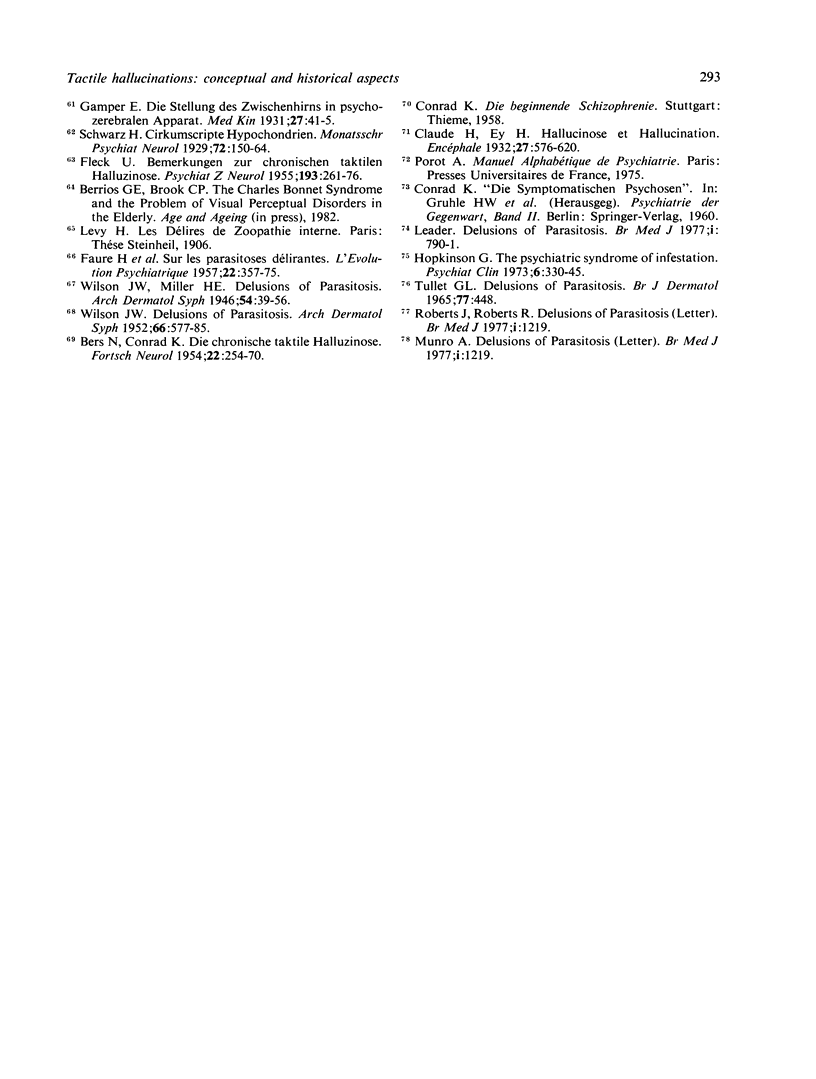
Selected References
These references are in PubMed. This may not be the complete list of references from this article.
- BERGMANN B. Zur Genese der taktilen Halluzinose bzw. Des Dermatozoenwahnes. Nervenarzt. 1957 Jan 20;28(1):22–27. [PubMed] [Google Scholar]
- BUSCH G. [The syndrome of delusions of vermin in a diabetic]. Z Gesamte Inn Med. 1960 May 1;15:411–417. [PubMed] [Google Scholar]
- Berrios G. E. Delirium and confusion in the 19th century: a conceptual history. Br J Psychiatry. 1981 Nov;139:439–449. doi: 10.1192/bjp.139.5.439. [DOI] [PubMed] [Google Scholar]
- FLECK U. Bemerkungen zur chronischen taktilen Halluzinose. Arch Psychiatr Nervenkr Z Gesamte Neurol Psychiatr. 1955;193(3):261–276. doi: 10.1007/BF00412783. [DOI] [PubMed] [Google Scholar]
- FREEMAN W., WILLIAMS J. M. Hallucinations in braille; effects of amygdaloidectomy. AMA Arch Neurol Psychiatry. 1953 Nov;70(5):630–634. doi: 10.1001/archneurpsyc.1953.02320350082009. [DOI] [PubMed] [Google Scholar]
- Ganner H., Lorenzi E. Der Dermatozoenwahn. Psychiatr Clin (Basel) 1975;8(1-2):31–44. [PubMed] [Google Scholar]
- Hopkinson G. The psychiatric syndrome of infestation. Psychiatr Clin (Basel) 1973;6(6):330–345. doi: 10.1159/000283293. [DOI] [PubMed] [Google Scholar]
- LIEBALDT G., KLAGES W. [Morphological findings in an "isolated chronic tactile dermatozoon hallucinosis"]. Nervenarzt. 1961 Apr;32:157–171. [PubMed] [Google Scholar]
- Reilly T. M., Beard A. W. Monosymptomatic hypochodriasis. Br J Psychiatry. 1976 Aug;129:191–192. doi: 10.1192/bjp.129.2.191b. [DOI] [PubMed] [Google Scholar]
- Rokhline L. L. Les conceptions psychopathologiques de Kandinsky. Sa théorie des hallucinations. Evol Psychiatr (Paris) 1971 Jul-Sep;36(3):475–488. [PubMed] [Google Scholar]
- Siegel R. K. Cocaine hallucinations. Am J Psychiatry. 1978 Mar;135(3):309–314. doi: 10.1176/ajp.135.3.309. [DOI] [PubMed] [Google Scholar]
- Tullett G. L. Delusions of parasitosis. Br J Dermatol. 1965 Aug-Sep;77(8):448–455. doi: 10.1111/j.1365-2133.1965.tb14676.x. [DOI] [PubMed] [Google Scholar]
- WILSON J. W. Delusion of parasitosis (acarophobia). AMA Arch Derm Syphilol. 1952 Nov;66(5):577–585. doi: 10.1001/archderm.1952.01530300033004. [DOI] [PubMed] [Google Scholar]


